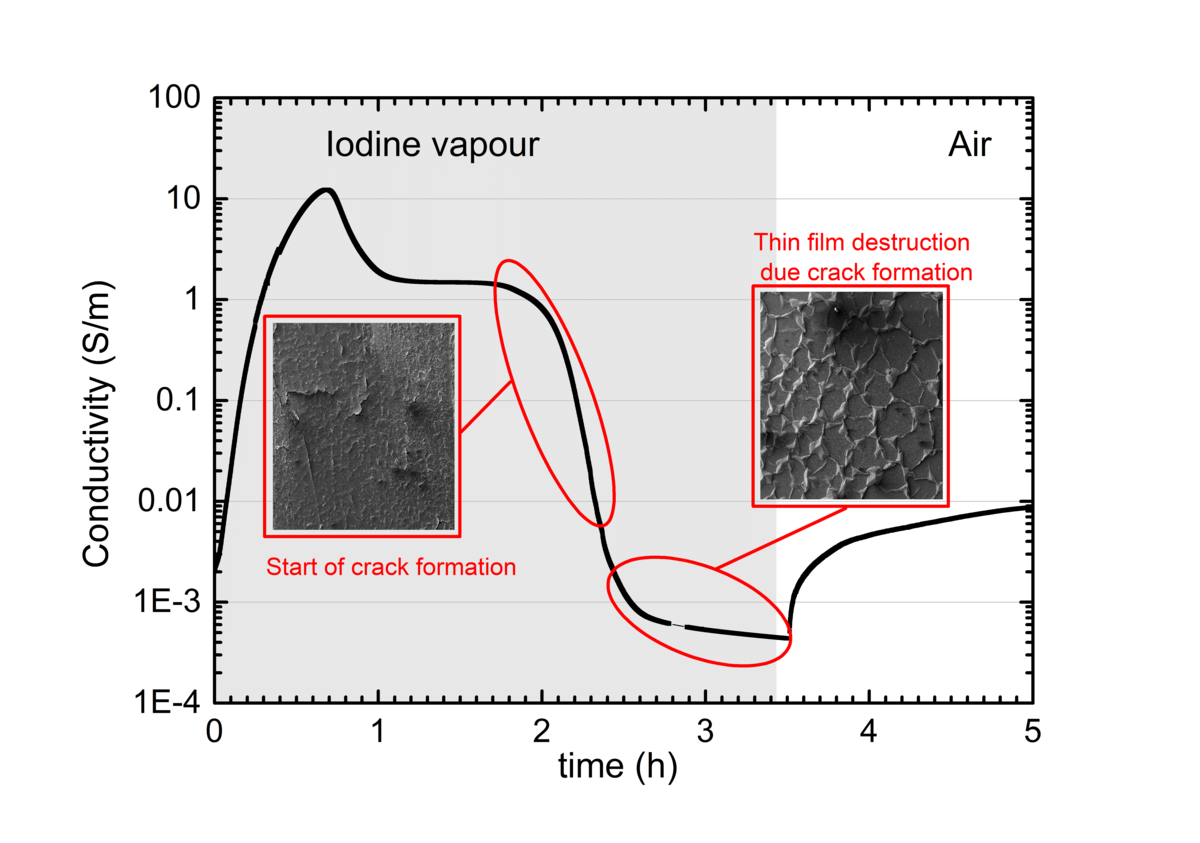
In the year humanity consumed 565 EJ large energy amount. It is estimated that 63% of all global energy consumption is wasted as heat and 20% are discarded as low-level heat < 200 °C forming 1020 J per year. It is about as much as the energy consumption of Europe per year. The wasted energy could be harvested by thermoelectric generators (TEG) which directly converts heat into electricity. With effective TEG, a number of problems are addressed at a time: the wasted heat for electricity generation is used reducing global warming and dealing with the energy crisis. The identification of these conditions has stimulated extensive studies in the field of thermoelectric materials, including organic materials.
In recent decades, functional organic materials compete and replace classic inorganic semiconductors in solar cells and light emitting diodes, where organic materials are in active part, such as organic light emitting diode displays on various portable devices and not only.
Unfortunately, the relatively low electrical conductivity of organic materials hampers their use in the TEG and therefore active studies are ongoing for the exploration and improvement of the charge carrier transport in organic materials.
The purpose of the this work was to explore the effects of the morphology of low molecular weight materials on electrical and thermal electrical properties. Create a thermoelectric device from systems with the best thermoelectric properties.
The impact of the structure of organic materials for electrical and thermoelectrical properties was studied in the work. For the first time, the effects of the molecule structure of newly synthesized indandione fragment containing AZO molecules and molecular structure of tetrathiotetracene derivatives on thin film morphology, electrical and thermoelectrical properties have been studied. The effects of certain spatial molecular groups on electrical properties and morphology was studied. The scanning electron microscopy was used to characterize the morphology of the organic layers. In order to characterize the charge carrier transport in the organic thin films, local trapping states of charge carriers were studied by space charge limited current methods, the mobility of the charge carriers and the electrical conductivity of the thin films were determined. Within the work equipment has been established for measuring and the study of charge carrier mobility by Time of Flight method and charge extraction by linearly increased voltage method. The equipment for Seebeck coefficient measurements were created for determination of thermoelectrical properties. The facility for the determination of thermal conductivity by the 3ω method was created. The organic thin film doping with iodine was realised to improve the electrical conductivity of p-type organic semiconductor thin films, which also included the creation of a new equipment for material thermal evaporation in the iodine atmosphere. The equipment for the simultaneous thermal evaporation of two substances in a vacuum was built to acquire n-type organic semiconductor thin films. As part of the work, planar-type organic thin film TEG was made and the working principle was demonstrated.
The scientific novelty of the work is as follows: the effects of bulk tritiloxyethyl groups on electrical properties and morphology have established at work. For the first time, electrical and thermal properties have studied for a range of tetrathiotetracene (TTT) derivatives. Thermoelectric properties of thin films of TTT and its derivatives have studied, as well as the effect of doping with iodine on electrical and thermoelectrical properties and morphology. Thin films of n-type conductivity of TTT and tetracyanoquinodimethane (TCNQ) have been established using the co-deposition in a vacuum, their thermoelectric properties and their morphology dependence on different TTT and TCNQ concentrations are described.